Finish the ShortestPath function implementing algorithm to c
Finish the ShortestPath function implementing algorithm to compute the shortest (i.e. lowest weight) path between two vertices of an edge-weighted graph. Must implement Dijkstra’s algorithm and use a heap-based priority queue to select the nest vertex at each step (It is not necessary to store a specific minimum weight path, only to determine the total weight of such a path). A Java template has been provided containing an empty method ShortestPath, which takes a single argument consisting of a weighted adjacency matrix for an edge -weighted graph G. The expected behavior of the method is as follows:
Input: An n×n array G representing an edge-weighted graph.
Output: An integer value corresponding to the total weight of a minimum weight path from vertex 0 to vertex 1.
import java.util.Arrays;
import java.util.Scanner;
import java.util.Vector;
import java.io.File;
public class ShortestPath{
/* ShortestPath(G)
Given an adjacency matrix for graph G, return the total weight
of a minimum weight path from vertex 0 to vertex 1.
If G[i][j] == 0, there is no edge between vertex i and vertex j
If G[i][j] > 0, there is an edge between vertices i and j, and the
value of G[i][j] gives the weight of the edge.
No entries of G will be negative.
*/
static int ShortestPath(int[][] G){
int numVerts = G.length;
int totalWeight = 0;
/* ... Your code here ... */
return totalWeight;
}
public static void main(String[] args){
Scanner s;
if (args.length > 0){
try{
s = new Scanner(new File(args[0]));
} catch(java.io.FileNotFoundException e){
System.out.printf(\"Unable to open %s\ \",args[0]);
return;
}
System.out.printf(\"Reading input values from %s.\ \",args[0]);
}else{
s = new Scanner(System.in);
System.out.printf(\"Reading input values from stdin.\ \");
}
int graphNum = 0;
double totalTimeSeconds = 0;
//Read graphs until EOF is encountered (or an error occurs)
while(true){
graphNum++;
if(graphNum != 1 && !s.hasNextInt())
break;
System.out.printf(\"Reading graph %d\ \",graphNum);
int n = s.nextInt();
int[][] G = new int[n][n];
int valuesRead = 0;
for (int i = 0; i < n && s.hasNextInt(); i++){
for (int j = 0; j < n && s.hasNextInt(); j++){
G[i][j] = s.nextInt();
valuesRead++;
}
}
if (valuesRead < n*n){
System.out.printf(\"Adjacency matrix for graph %d contains too few values.\ \",graphNum);
break;
}
long startTime = System.currentTimeMillis();
int totalWeight = ShortestPath(G);
long endTime = System.currentTimeMillis();
totalTimeSeconds += (endTime-startTime)/1000.0;
System.out.printf(\"Graph %d: Minimum weight of a 0-1 path is %d\ \",graphNum,totalWeight);
}
graphNum--;
System.out.printf(\"Processed %d graph%s.\ Average Time (seconds): %.2f\ \",graphNum,(graphNum != 1)?\"s\":\"\",(graphNum>0)?totalTimeSeconds/graphNum:0);
}
}
Solution
import java.util.hashset;
import java.util.inputmismatchexception;
import java.util.iterator;
import java.util.scanner;
import java.util.set;
public class dijkstras_shortest_path
{
private int distances[];
private set<integer> settled;
private set<integer> unsettled;
private int number_of_nodes;
private int adjacencymatrix[][];
public dijkstras_shortest_path(int number_of_nodes)
{
this.number_of_nodes = number_of_nodes;
distances = new int[number_of_nodes + 1];
settled = new hashset<integer>();
unsettled = new hashset<integer>();
adjacencymatrix = new int[number_of_nodes + 1][number_of_nodes + 1];
}
public void dijkstra_algorithm(int adjacency_matrix[][], int source)
{
int evaluationnode;
for (int i = 1; i <= number_of_nodes; i++)
for (int j = 1; j <= number_of_nodes; j++)
adjacencymatrix[i][j] = adjacency_matrix[i][j];
for (int i = 1; i <= number_of_nodes; i++)
{
distances[i] = integer.max_value;
}
unsettled.add(source);
distances[source] = 0;
while (!unsettled.isempty())
{
evaluationnode = getnodewithminimumdistancefromunsettled();
unsettled.remove(evaluationnode);
settled.add(evaluationnode);
evaluateneighbours(evaluationnode);
}
}
private int getnodewithminimumdistancefromunsettled()
{
int min;
int node = 0;
iterator<integer> iterator = unsettled.iterator();
node = iterator.next();
min = distances[node];
for (int i = 1; i <= distances.length; i++)
{
if (unsettled.contains(i))
{
if (distances[i] <= min)
{
min = distances[i];
node = i;
}
}
}
return node;
}
private void evaluateneighbours(int evaluationnode)
{
int edgedistance = -1;
int newdistance = -1;
for (int destinationnode = 1; destinationnode <= number_of_nodes; destinationnode++)
{
if (!settled.contains(destinationnode))
{
if (adjacencymatrix[evaluationnode][destinationnode] != integer.max_value)
{
edgedistance = adjacencymatrix[evaluationnode][destinationnode];
newdistance = distances[evaluationnode] + edgedistance;
if (newdistance < distances[destinationnode])
{
distances[destinationnode] = newdistance;
}
unsettled.add(destinationnode);
}
}
}
}
public static void main(string... arg)
{
int adjacency_matrix[][];
int number_of_vertices;
int source = 0, destination = 0;
scanner scan = new scanner(system.in);
try
{
system.out.println(\"enter the number of vertices\");
number_of_vertices = scan.nextint();
adjacency_matrix = new int[number_of_vertices + 1][number_of_vertices + 1];
system.out.println(\"enter the weighted matrix for the graph\");
for (int i = 1; i <= number_of_vertices; i++)
{
for (int j = 1; j <= number_of_vertices; j++)
{
adjacency_matrix[i][j] = scan.nextint();
if (i == j)
{
adjacency_matrix[i][j] = 0;
continue;
}
if (adjacency_matrix[i][j] == 0)
{
adjacency_matrix[i][j] = integer.max_value;
}
}
}
system.out.println(\"enter the source \");
source = scan.nextint();
system.out.println(\"enter the destination \");
destination = scan.nextint();
dijkstras_shortest_path dijkstrasalgorithm = new dijkstras_shortest_path(
number_of_vertices);
dijkstrasalgorithm.dijkstra_algorithm(adjacency_matrix, source);
system.out.println(\"the shorted path from \" + source + \" to \" + destination + \" is: \");
for (int i = 1; i <= dijkstrasalgorithm.distances.length - 1; i++)
{
if (i == destination)
system.out.println(source + \" to \" + i + \" is \"
+ dijkstrasalgorithm.distances[i]);
}
} catch (inputmismatchexception inputmismatch)
{
system.out.println(\"wrong input format\");
}
scan.close();
}
}
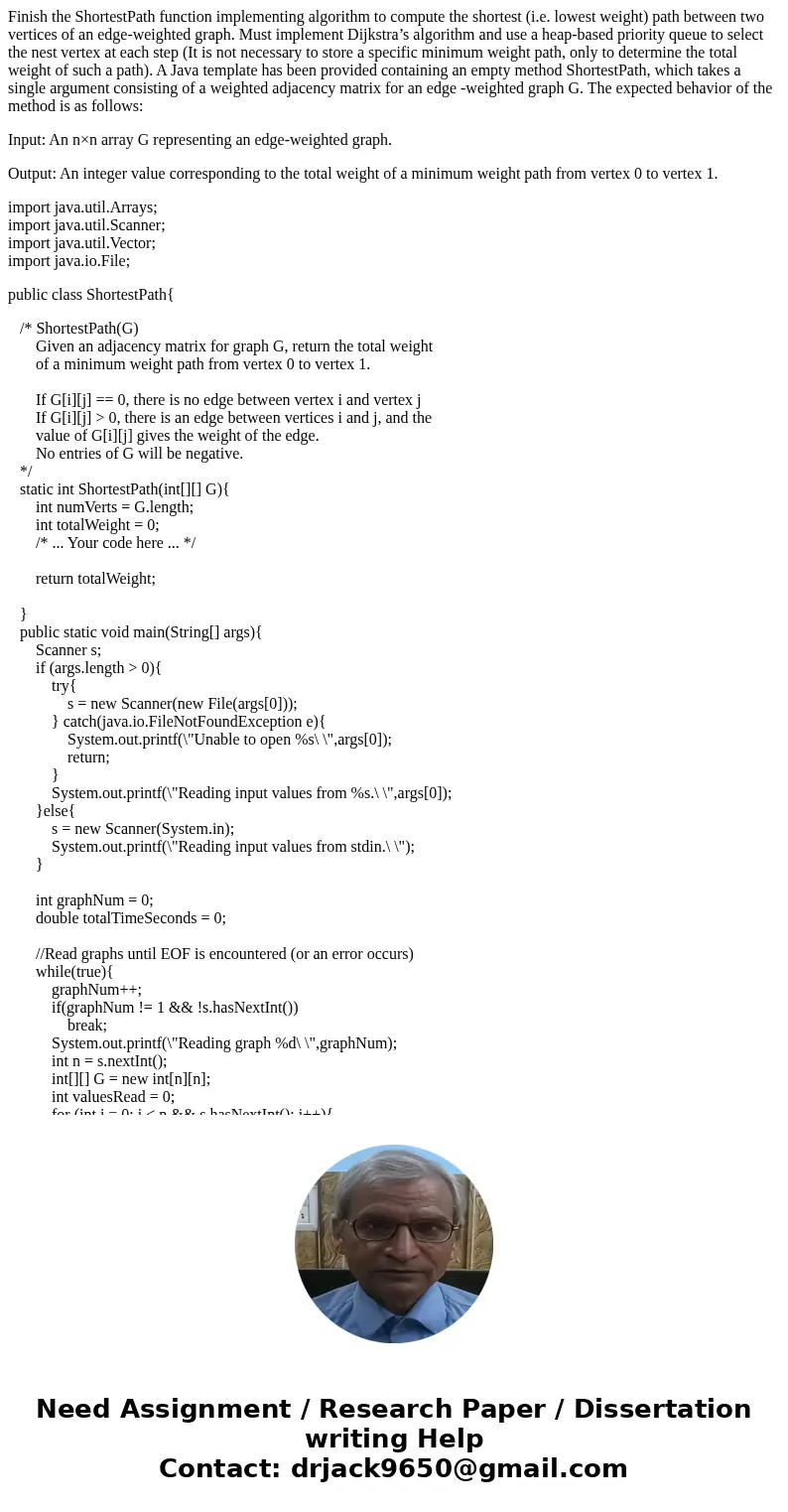
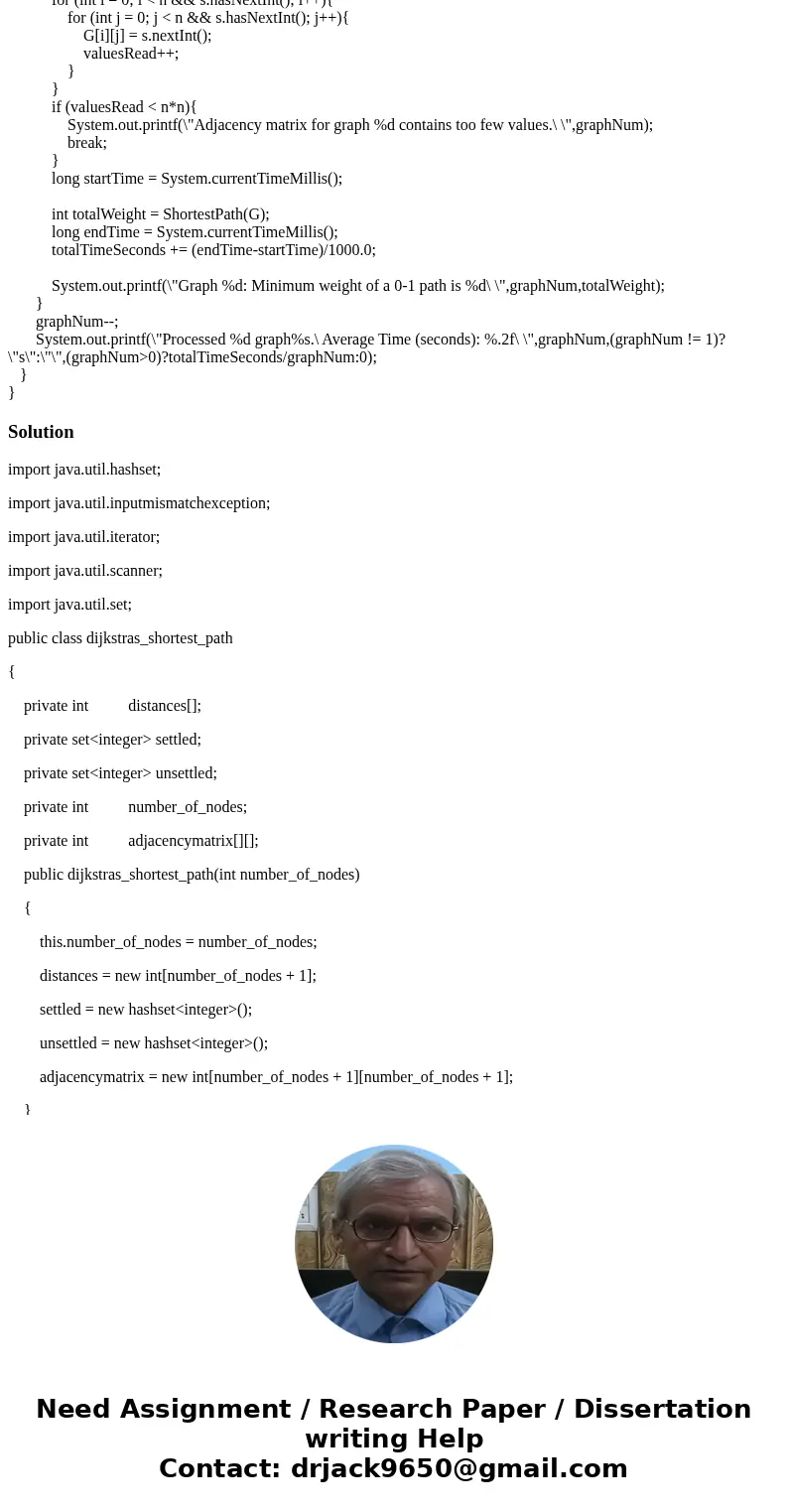
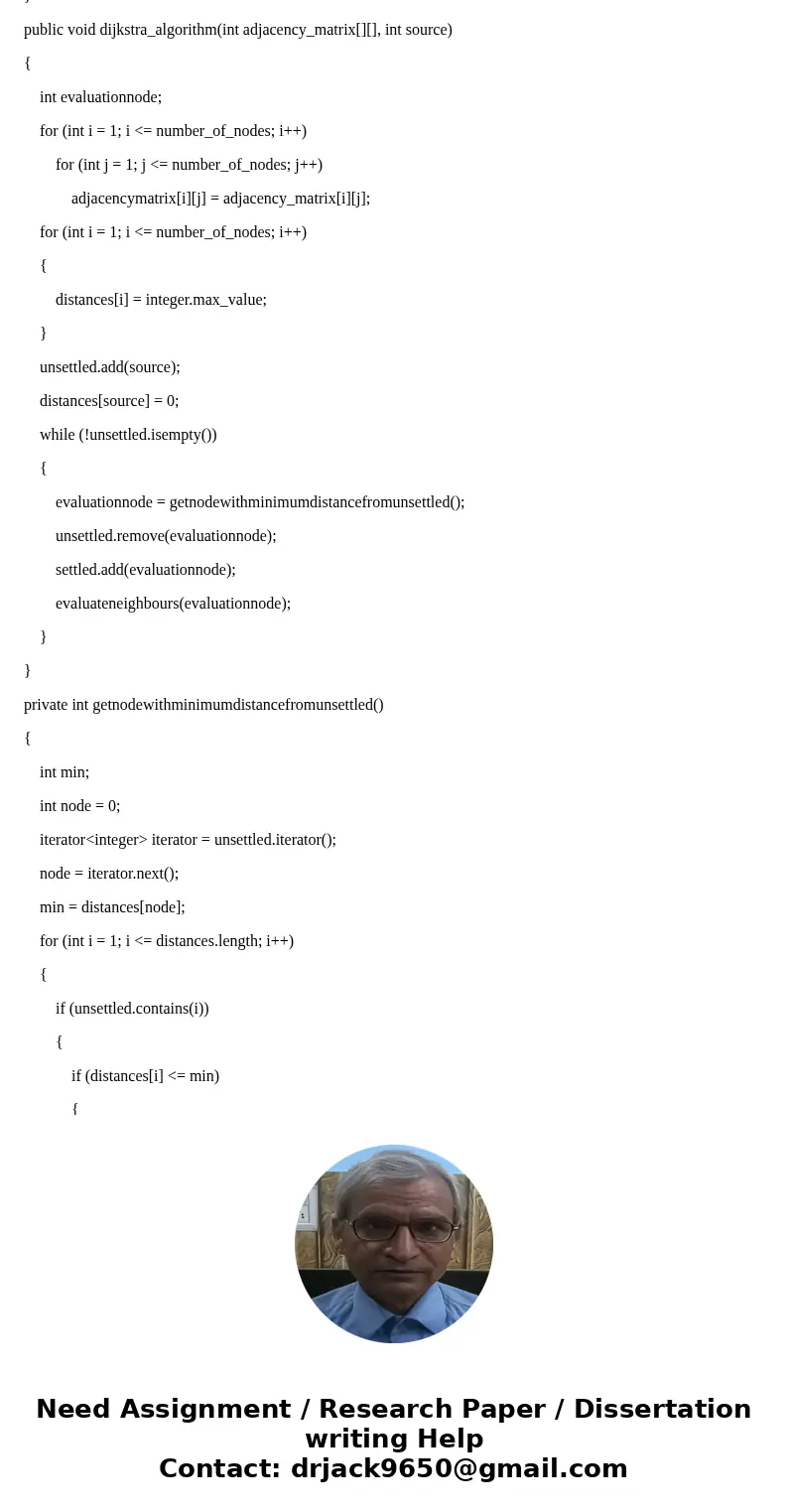
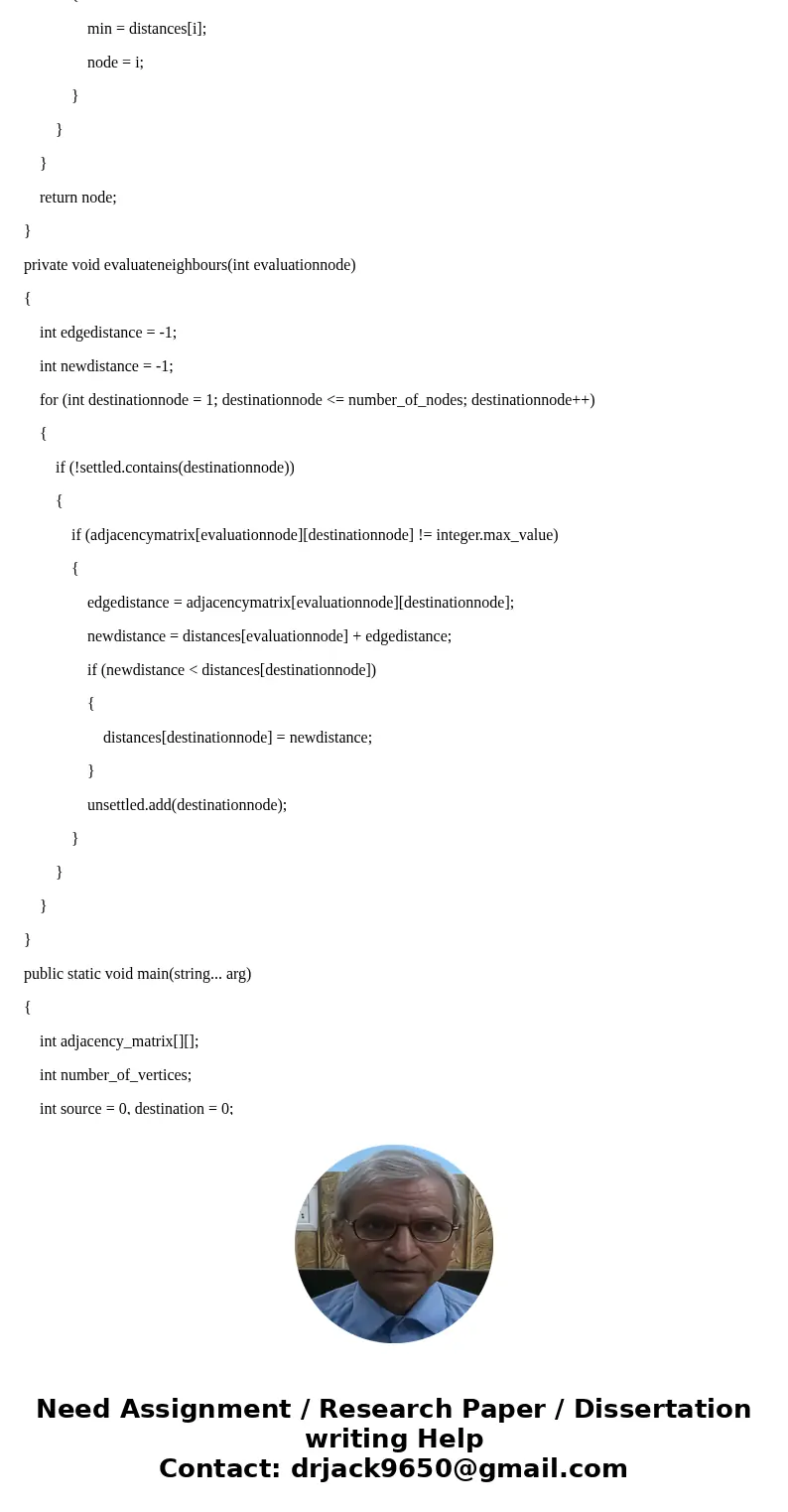
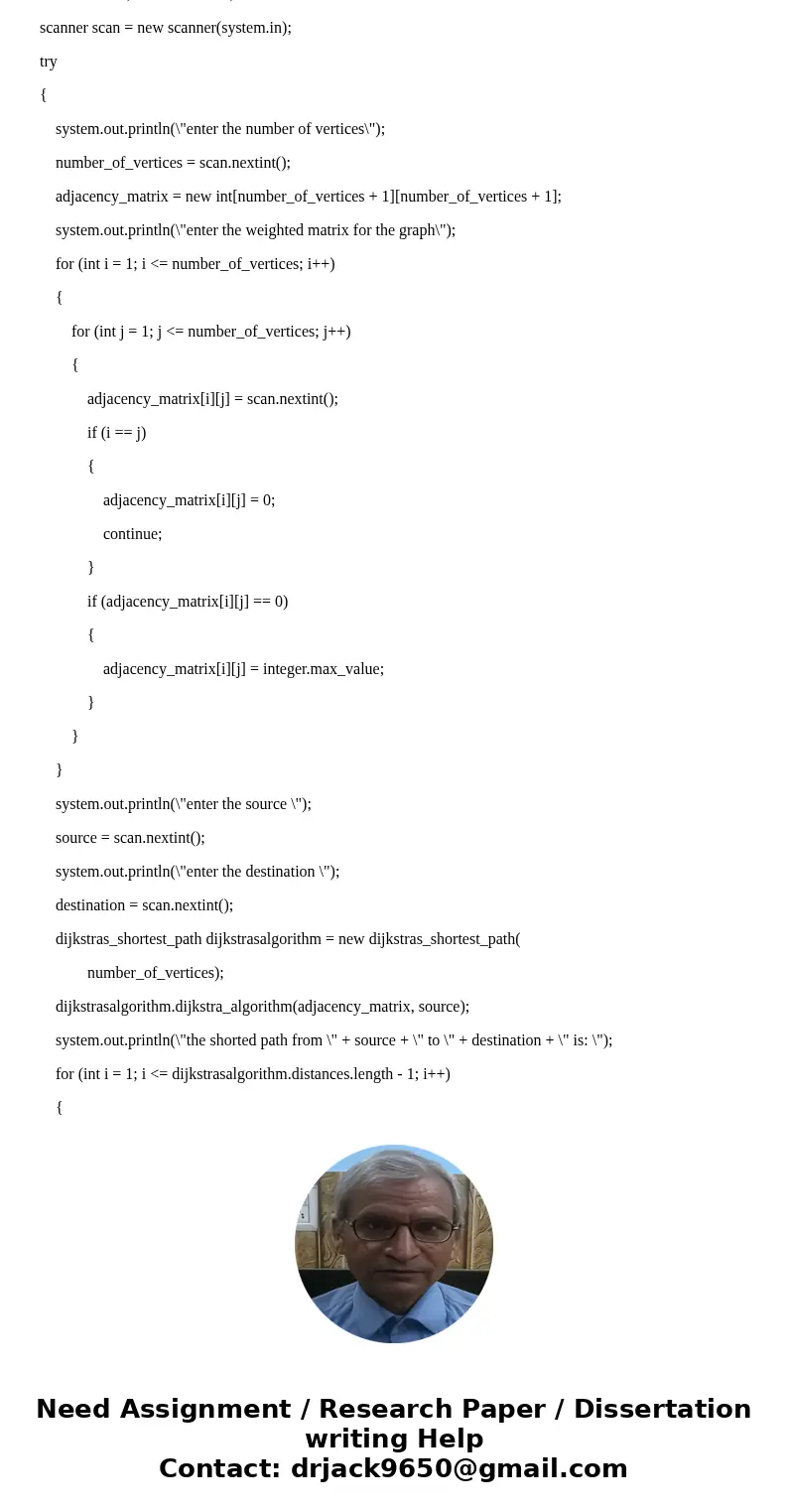
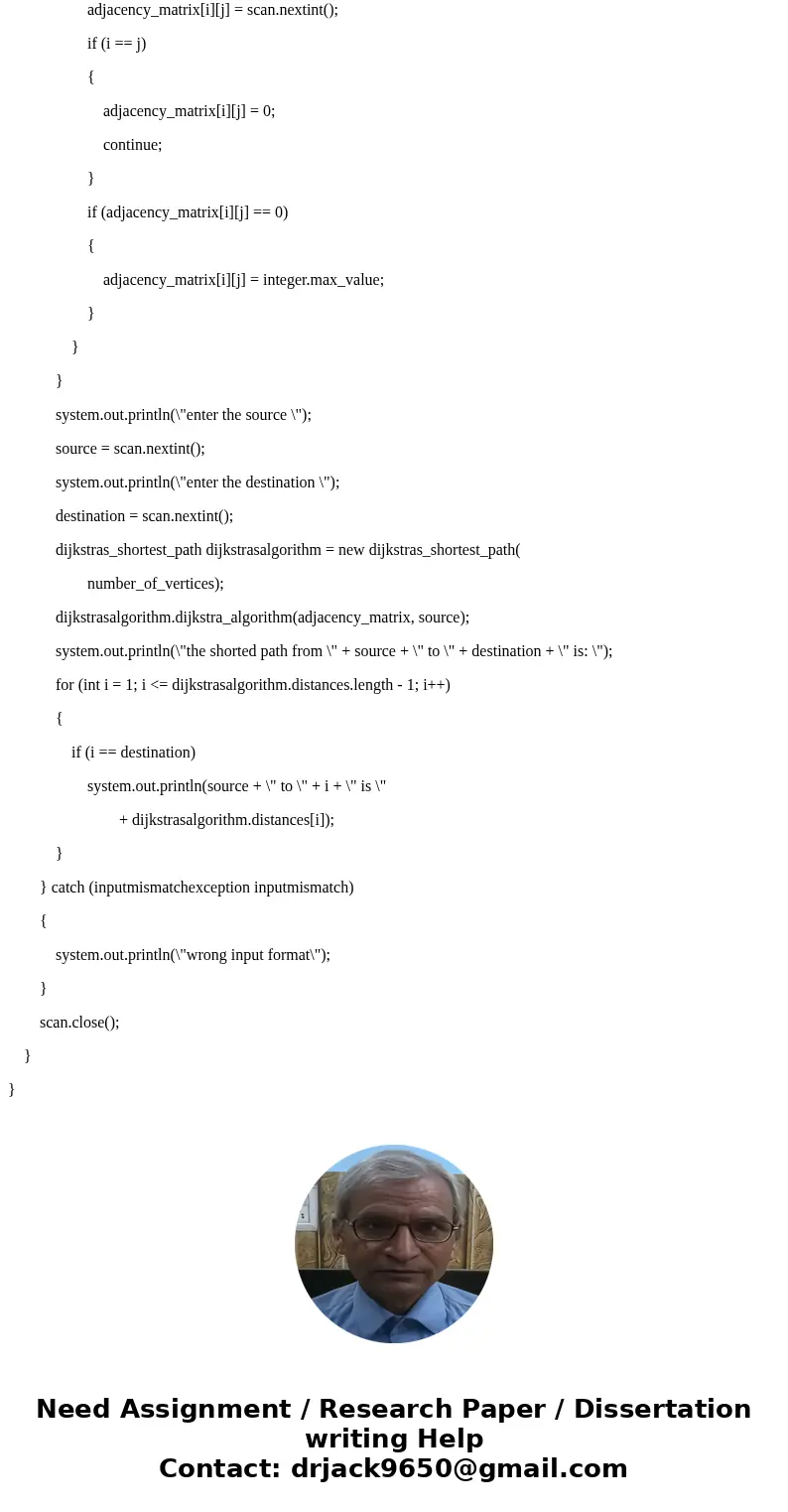
 Homework Sourse
Homework Sourse